 W
WA War of Shadows is a non-fiction book written by W. Stanley Moss, a British soldier, writer and traveller, best known, together with Patrick Leigh Fermor, for the Kidnap of General Kreipe as described in Moss’s book Ill Met by Moonlight. Moss recounts his subsequent activities during World War II as agent of the Special Operations Executive (SOE) in Crete, Macedonia (Greece) and Siam (Thailand). The 2014 editions contain an Introduction by one of Moss's children and a short biography, Billy Moss: Soldier, Writer, Traveller - A Brief Life by Alan Ogden as an Afterword.
 W
WAston House was a prominent 17th century residence with large parkland situated opposite the parish church in Aston, Hertfordshire, UK.The house was demolished in 1961 by the Stevenage New Town Development Corporation after occupying it as its initial HQ. The site was developed and named Yeomans Drive in memory of Arthur Yeomans the last owner in 1939 when it was requisitioned by the War Office. The adjoining parkland became Stevenage Golf-and Conference-Centre in April 1980.
 W
WThe Baker Street Irregulars are fictional characters who appear in three Sherlock Holmes stories, specifically two novels and one short story, by Arthur Conan Doyle. They are street boys who are employed by Holmes as intelligence agents. The name has subsequently been adopted by other organizations, most notably a prestigious and exclusive literary society founded in the United States by Christopher Morley in 1934.
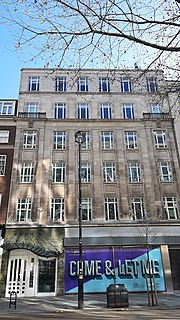 W
W64 Baker Street is a commercial property in central London. It was the address of the headquarters of the Special Operations Executive.
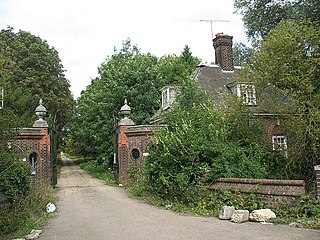 W
WBriggens House is a Grade II listed 18th-century house and parklands near the village of Roydon, Essex, England. It has a number of features from the garden designer Charles Bridgeman from 1720. There are also some remains of the pleasure gardens developed by Lord Hunsden in 1908.
 W
WBritish Security Co-ordination (BSC) was a covert organisation set up in New York City by the British Secret Intelligence Service (MI6) in May 1940 upon the authorisation of the Prime Minister, Winston Churchill.
 W
WThe Bureau Bijzondere Opdrachten was a Dutch secret service during World War II. The BBO dispatched secret agents to the German-occupied Netherlands, where they supported the local resistance and carried out sabotage activities.
 W
WCamp X was the unofficial name of the secret Special Training School No. 103, a Second World War British paramilitary installation for training covert agents in the methods required for success in clandestine operations. It was located on the northwestern shore of Lake Ontario between Whitby and Oshawa in Ontario, Canada. The area is known today as Intrepid Park, after the code name for Sir William Stephenson, Director of British Security Co-ordination (BSC), who established the program to create the training facility.
 W
WCarve Her Name with Pride is a 1958 British war drama film based on the book of the same name by R. J. Minney.
 W
WThe Comet Line was a Resistance organization in occupied Belgium and France in the Second World War. The Comet Line helped Allied soldiers and airmen shot down over occupied Belgium evade capture by Germans and return to Great Britain. The Comet Line began in Brussels where the airmen were fed, clothed, given false identity papers, and hidden in attics, cellars, and people's homes. A network of volunteers then escorted them south through occupied France into neutral Spain and home via British-controlled Gibraltar. The motto of the Comet Line was "Pugna Quin Percutias", which means "fight without arms", as the organization did not undertake armed or violent resistance to the German occupation.
 W
WThe Corps Franc de la Montagne Noire or C.F.M.N, was a fighting unit of the French resistance, during World War II, it was located in the mountainous area of the southwestern end of Massif Central. Its mission was to prevent German troops from going to reinforce the landing fronts in Normandy and Provence, via Montagne Noire.
 W
WElectra House is a building at 84 Moorgate, London, England. It is notable as the wartime London base of Cable & Wireless Limited, and office of Department EH — one of the three British organisations that merged in World War II to form the Special Operations Executive.
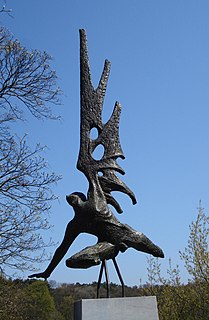 W
WEnglandspiel, or Operation North Pole, was a successful counterintelligence operation of the Abwehr from 1942 to 1944 during World War II. German forces captured Allied resistance agents operating in the Netherlands and used the agents' codes to dupe the United Kingdom's clandestine organization, the Special Operations Executive (SOE), into continuing to infiltrate agents, weapons, and supplies into the Netherlands. The Germans captured nearly all the agents and weapons sent by the United Kingdom (Britain).
 W
WEscape and evasion lines in World War II helped people escape Western European countries occupied by Nazi Germany. The focus of most escape lines was assisting British and American airmen shot down over occupied Europe to evade capture and escape to neutral Spain, Switzerland, or Sweden from where they could return to the United Kingdom. A distinction is sometimes made between "escapers" and "evaders". Most of those helped by escape lines were evaders.
 W
WForce 136 was the general cover name, from March 1944, for a Far East branch of the British World War II intelligence organisation, the Special Operations Executive (SOE). Originally set up in 1941 as the India Mission with the cover name of GSI(k), it absorbed what was left of SOE's Oriental Mission in April 1942. The man in overall charge for the duration of the war was Colin Mackenzie.
 W
WThe French Resistance was a collection of French movements that fought against the Nazi German occupation of France and the collaborationist Vichy régime during the Second World War. Resistance cells were small groups of armed men and women who, in addition to their guerrilla warfare activities, were also publishers of underground newspapers, providers of first-hand intelligence information, and maintainers of escape networks that helped Allied soldiers and airmen trapped behind enemy lines. The Resistance's men and women came from all economic levels and political leanings of French society, including émigrés, academics, students, aristocrats, conservative Roman Catholics, Protestants, Jews, Muslims, liberals, anarchists, and communists.
 W
WThe Frythe is a country house set in its own grounds in rural Hertfordshire, just south of the village of Welwyn, about 30 miles north of London.
 W
WInverailort House is a mansion, south of Lochailort, at the head of Loch Ailort.
 W
WThe following is an incomplete list of training centres, research and development sites, administrative sites and other establishments used by the Special Operations Executive during the Second World War.
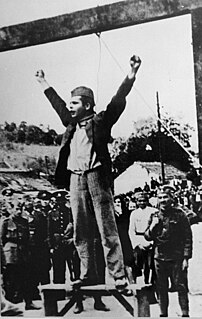 W
WThe Maquis were rural guerrilla bands of French Resistance fighters, called maquisards, during the Nazi occupation of France in World War II. Initially, they were composed of young, mostly working-class, men who had escaped into the mountains and woods to avoid conscription into Vichy France's Service du travail obligatoire to provide forced labor for Germany. To avert capture and deportation to Germany, they became increasingly organized into active resistance groups.
 W
WNo. 62 Commando or the Small Scale Raiding Force (SSRF) was a British Commando unit of the British Army during the Second World War. The unit was formed around a small group of commandos under the command of the Special Operations Executive (SOE). They carried out a number of raids before being disbanded in 1943.
 W
WNo. 138 Squadron RAF was a squadron of the Royal Air Force that served in a variety of roles during its career, last disbanded in 1962. It was the first 'V-bomber' squadron of the RAF, flying the Vickers Valiant between 1955 and 1962.
 W
WNo. 161 Squadron was a highly secretive unit of the Royal Air Force, performing missions as part of the Royal Air Force Special Duties Service. It was tasked with missions of the Special Operations Executive (SOE) and the Secret Intelligence Service (SIS) during the Second World War. Their primary role was to drop and collect secret agents and equipment into and from Nazi-occupied Europe. The squadron had a secondary role in acting as the King's Flight.
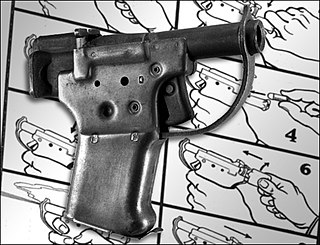 W
WOperation Braddock was a secret service measure planned and carried out by the British Special Operations Executive (SOE) from 1943 onwards during the Second World War. The aim was to create confusion, fears, insecurity and demoralisation in enemy territory by dropping so-called "attack packages". The dropped packages were to contain special grenades, pocket flares, a small firearm or incendiary devices. Subversive forces, prisoners of war or forced labourers, equipped with these and operating in the enemy territory, should then carry out attacks that become a significant threat to the enemy.
 W
WOperation Periwig was a secret service operation planned and carried out by the British Special Operations Executive (SOE) from November 1944 onwards during the Second World War. The aim was to disrupt the Nazi regime by feigning resistance movements within the German territory.
 W
WThe Paraset was a small, low-power, thermionic valve, CW-only radio transmitter-receiver supplied to the resistance groups in France, Belgium and the Netherlands during World War II.
 W
WCaptain Peter Miles Riggal served with the Lincolnshire Regiment and was an expert in the use of explosives. He was recruited by SOE and worked as an instructor. Later in the war he was attached to Force 136 in the Far East, and instructed agents who were to be dropped into Japan to destroy key targets during the planned invasion of Japan. Their skills were not put into use as the war with Japan was ended by the use of the atom bomb.
 W
WThe Shetland Bus was the nickname of a clandestine special operations group that made a permanent link between Mainland Shetland in Scotland and German-occupied Norway from 1941 until the surrender of Nazi Germany on 8 May 1945. From mid-1942, the group's official name was the Norwegian Naval Independent Unit (NNIU). In October 1943, it became an official part of the Royal Norwegian Navy and was renamed the Royal Norwegian Naval Special Unit (RNNSU). The unit was operated initially by a large number of small fishing boats and later augmented by three fast and well-armed submarine chasers – Vigra, Hessa and Hitra.
 W
WThe surrender of Major General Botho Elster and more than 19,000 German soldiers to the United States Army during World War II took place on 17 September 1944 at Beaugency, France. Elster and his soldiers were attempting to escape from France which was rapidly being freed from occupation by Nazi Germany by Allied military forces. With his escape route to Germany cut off by Allied armies, surrounded by French Resistance fighters, and attacked by Allied air forces, Elster negotiated a surrender to the United States Army. Members of the French Resistance criticized the surrender as it did not give credit to the Resistance for its contribution to Elster's surrender.
 W
WTara was the name given to a villa in Gezira Island, Cairo, made famous by its inhabitants during World War II. The group of Special Operations Executive agents who lived there, together with Countess Zofia (Sophie) Tarnowska, turned the villa into a centre of high spirited living.
 W
WRAF Tempsford is a former Royal Air Force station located 2.3 miles (3.7 km) north east of Sandy, Bedfordshire, England and 4.4 miles (7.1 km) south of St. Neots, Cambridgeshire, England.
 W
WThe Valençay SOE Memorial is a monument in France to the members of the Special Operations Executive F Section who lost their lives working to liberate the country during World War II.
 W
WWanborough Manor is an Elizabethan manor house on the Hog's Back in Wanborough in the Borough of Guildford, Surrey. During World War II the manor house was requisitioned by the Special Operations Executive (SOE) to train secret agents and was known as Special Training School 5 and later returned to private ownership.
 W
WThe Welbike was a British single-seat motorcycle produced during World War II at the direction of Station IX — the "Inter Services Research Bureau" — based at Welwyn, UK, for use by Special Operations Executive (SOE). It has the distinction of being the smallest motorcycle ever used by the British Armed Forces. Between 1942 and 1943, 3,641 units were built and, although not much used by the SOE, some were issued to the British 1st and 6th Airborne Divisions and some were used at Arnhem during Operation Market Garden.
 W
WThe Welfreighter was a Second World War British midget submarine developed by the Special Operations Executive (SOE) for the purpose of landing and supplying agents behind enemy lines. It only saw action once and was not particularly successful.
 W
WThe Welman submarine was a Second World War one-man British midget submarine developed by the Special Operations Executive. It only saw action once and was not particularly successful.
 W
WThe Welrod is a British bolt action, magazine fed, suppressed pistol devised during World War II by Major Hugh Reeves at the Inter-Services Research Bureau. Station IX, being based near Welwyn Garden City, gave the Welrod its unusual name, being derived from "Wel" from "Welwyn Garden City" and "rod", gangland slang for gun, as a way to obscure its purpose.